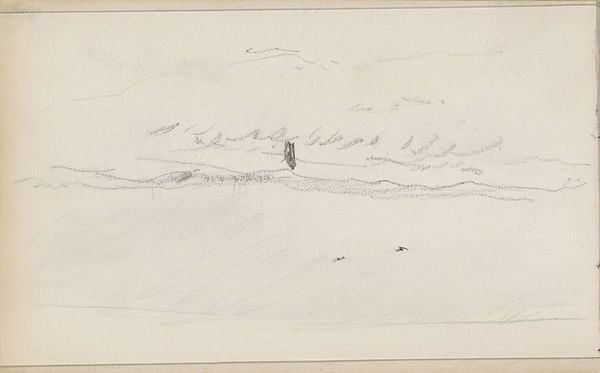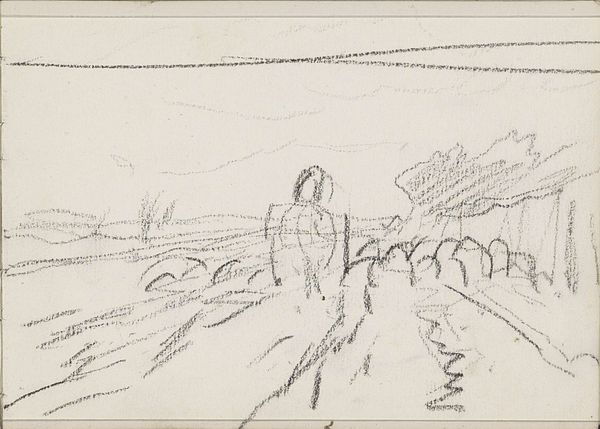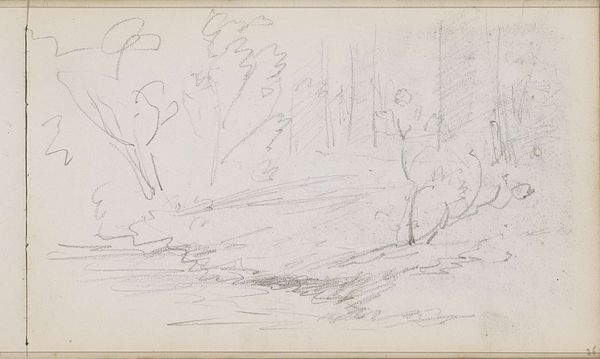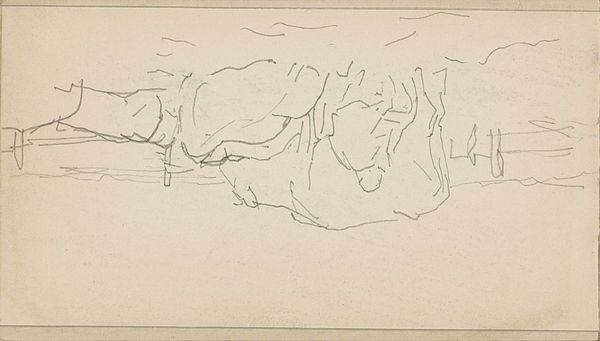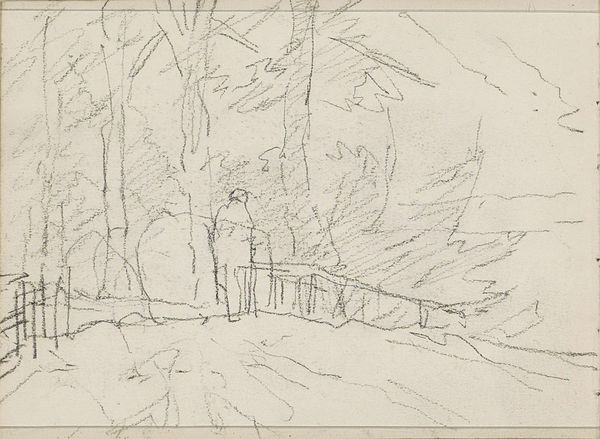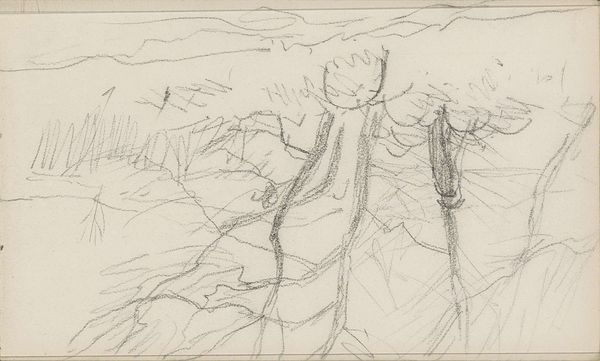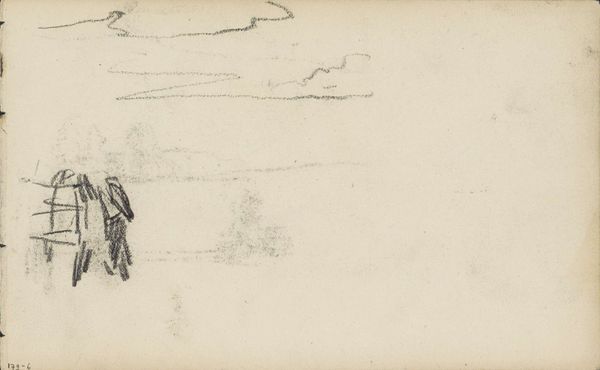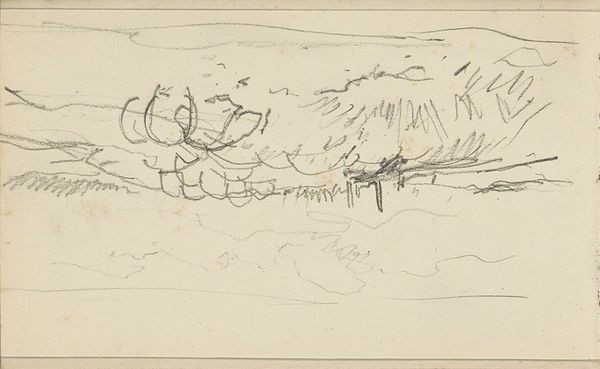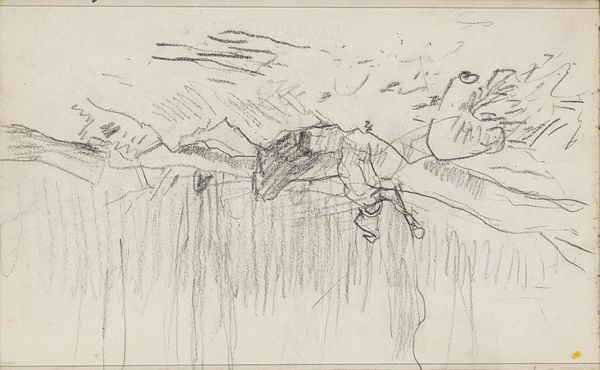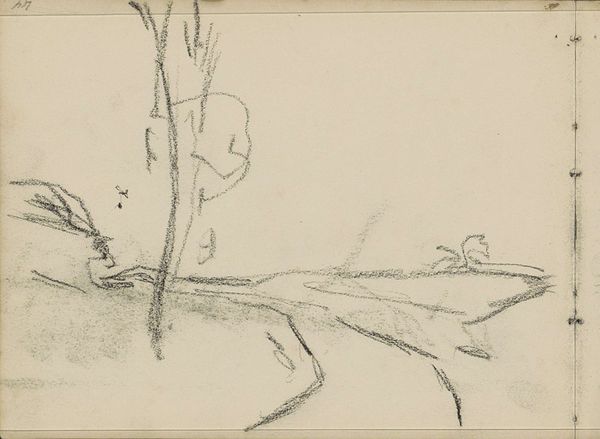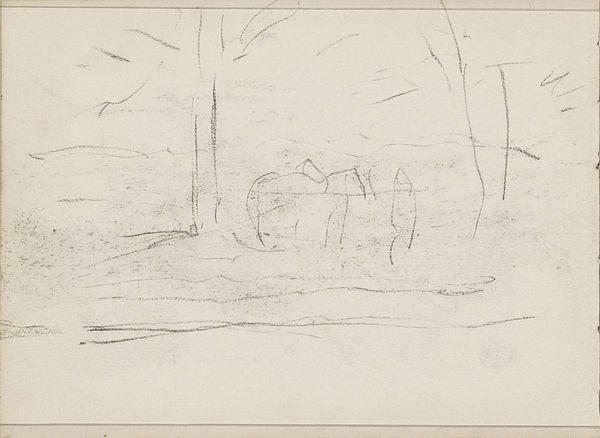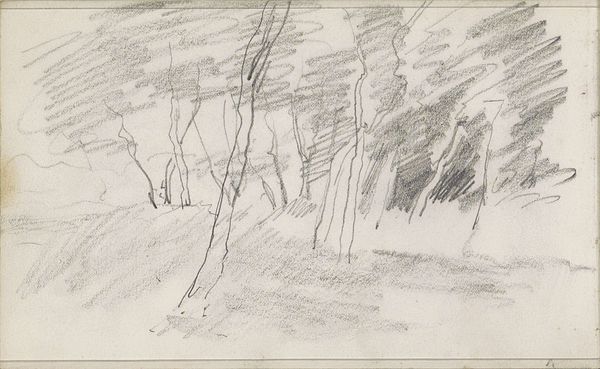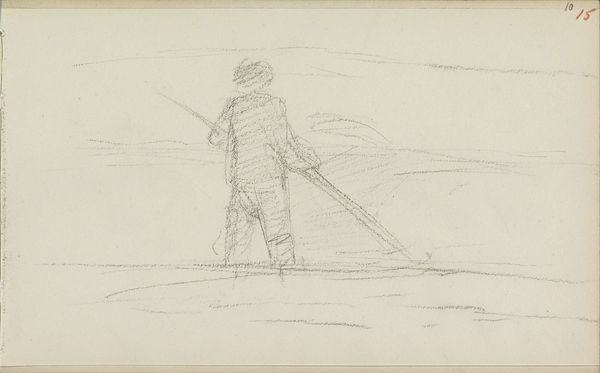
drawing, pencil
#
drawing
#
landscape
#
figuration
#
pencil
Copyright: Rijks Museum: Open Domain
Editor: Here we have Anton Mauve's "Herder met een kudde schapen in een landschap," created circa 1876 to 1879. It's a pencil drawing, very delicate. It feels like a fleeting moment captured on paper. What draws your eye when you look at this? Curator: I immediately consider the humble materials and the socio-economic conditions surrounding their use. A simple pencil on paper provides the means to depict labor—the herder, his flock. The fleetingness you mention underscores the transient nature of work itself. How does Mauve's technique connect to broader issues of labor and landscape? Editor: So, you're seeing the sketchiness itself as related to the herder's lifestyle? The simple materials reflect the hard work depicted? Curator: Precisely. Mauve isn’t just depicting a pastoral scene; he’s engaging with the real conditions of rural labor. Pencil sketches weren't necessarily "high art," but this embraces the everyday material of artistic creation as part of its power, connecting directly to labor and production itself. Think of the consumption of images like this: does this romanticize labor or simply depict it? Editor: That’s fascinating. I hadn't thought about the art supplies themselves playing a role. I guess I just assumed pencil and paper were basic. Curator: It begs the question, then, of how something basic becomes "art." Is it the subject, the skill, or something else entirely, like the context of labor within which it was produced and the audience for whom it's intended? The value shifts when considering its origins and its display in a museum like the Rijksmuseum. Editor: So, considering it as more than just a pretty landscape, opens up a new understanding of the value embedded in the art itself, considering both the literal materials and the working conditions. Curator: Indeed. It moves beyond the aesthetic to grapple with the real world of production and consumption, both of the artwork itself and what it represents.
Comments
No comments
Be the first to comment and join the conversation on the ultimate creative platform.
